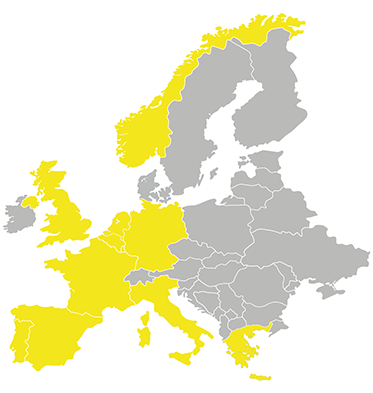The UK Autumn budget announced over £20bn in R&D funding available for the year 2025-2026, with record levels of funding for innovation protected. In addition, the UK has re-entered the Horizon EU scheme with a budget of €95.5bn for the current 2021-2027 programme. These are joined by dozens of other grant funding bodies and grant programmes aiming to champion and accelerate the best and most disruptive innovations. But how do you navigate the UK grant funding landscape?
With so many sources of potential funding, all bearing their own unique requirements and objectives, it can be difficult to know whether a funding source is suitable or to gauge your likelihood of success. However, we are here to provide some valuable insight into pre-grant proposal considerations, which can make this easier for you.
Open and Thematic Calls
Do you meet the programme objectives? First and foremost, does your innovation or project idea fit the call? Broadly speaking, you can sort grant funding opportunities into two types: open, and thematic.
- Open calls can be from any innovation area, and while highly competitive are often open all year/have multiple rounds.
- Thematic calls (such as the AI Solutions to Develop AI Competencies in Key Sectors, The Life Sciences Innovative Manufacturing Fund (LSIMF) are more specific, but where you do meet the objectives you typically have a higher chance of success.
In all cases, there will be clearly explained objectives, aims, and expected impact as a result of your project which you have to meet in order to maximise your chances to secure grant funding. Be sure to check a wide range of funding bodies to be sure to catch any that might be of interest, as they are constantly updating and new opportunities arising.
We can keep you up to date with the latest grant news and make you aware of opportunities that you would otherwise miss.
Meeting the Criteria
Is your innovative project addressing a clear opportunity and need, with strong potential impact? If you fulfil the eligibility criteria, the next stage is to ensure you align to the general objectives of the funding body and grant funding in general.
- Do you have a clear business opportunity you intend to exploit, with a well-defined market need?
- Do you have a strong commercialisation plan?
- Does your project show clear economic, social, and environmental benefits?
If the project is aligned so as to clearly target and answer these fundamental questions, you are much more likely to meet the criteria for a promising project for grant funding.
We can aid with alignment in the application process, and ensure you consider all the necessary points that funding bodies are interested in to craft a compelling proposal.
Does the funding require partners and who is in your consortium? Some grants require collaboration such as the India – UK Collaborative R&D for industrial sustainability Rd 2 or whereas others allow collaboration but it isn’t essential.
- Any collaboration should be truly collaborative, that is, should show clear roles and values for all parties involved.
- Each partner should bring something to the consortium with clear benefits to them as a result of the funding.
In cases where you need a partner to apply for the grant funding, or are looking for a partner to bridge a skill gap or add value to your proposal, we are knowledgeable in finding partners both domestically and globally through our network.
Compliance
Do you have funds to match the grant, and the first quarter of the project? Two key considerations when planning your project are the amount of match funding required, and the fact that grant funding payments are typically made quarterly in arrears.
- Match funding can come from revenues, existing funding, private investment, family-and-friend loans, but crucially cannot come from in-kind contributions.
- Depending on the TRL level of your innovation, the amount of funding you apply for, and the nature of your organisation/partner organisations (micro/small/medium/large enterprise, academic institution, RTO, etc.) the required matched funding rate will be different (anywhere from 100% funded to 25% funded, scheme dependent).
- Depending on the funding body and the size of the grant, you may be asked to prove you have sufficient funds to cover the first quarter of expenses before claims can be paid. These quarterly claims are made with technical and commercial reports to update the funding body on the progress of the project.
Our expert compliance team can aid in advising on what project costs are eligible, ensuring your project budget comply with the programmes criteria, and aid in quarterly reporting and project management.
Do you need support?
If you meet the above criteria, congratulations! You are well positioned to begin applying for grant funding.
If you’re ready to start applying, get in touch and our experts can help you craft a compelling grant application and if not, we at PNO can help guide you through the complex grant landscape and grant application process, identifying opportunities, linking with partners, and aiding in the alignment of your project to maximise your chances of success.
You can reach our team by contacting us at 0161 488 3488 | info.uk@pnoconsultants.com




